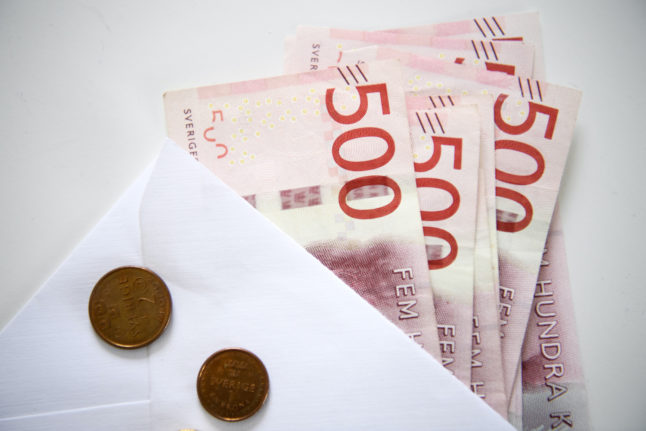No more key interest rate hikes
Will the key interest rate peak at 4 percent, or will the Riksbank central bank need to hike the rate again to battle inflation? If there aren’t any nasty surprises, most indicators seem to predict that mortgage rates will start to drop next year, with some experts predicting that rates could start to drop as soon as the spring.
Sweden’s National Institute of Economic Research (KI) predicts in its most recent forecast that inflation will drop considerably next year, with the central bank starting to lower interest rates in the summer.
The banks also seem to hold this view – SEB predicts three drops in the key interest rate during 2024, and Nordea is also optimistic.
“Interest rates have peaked,” Nordea economist Anders Stenkrona said.
From crisis management to public spending
The government may also shift focus from crisis management to public spending once inflation starts to fall, economist Shoka Åhrman from pension fund SPP predicts.
This wasn’t possible while inflation was rising, but the situation could change now that things seem to have changed for the better.
“Inflation going down is important, there’ll be a shift there,” she said.
Some crisis management policies will remain, she admitted, like the additional benefit offered to families with young children, which has been extended to June 2024.
It will be possible to start planning again
“When finances become a bit more predictable households have a chance to catch up,” Anders Stenkrona from Nordea said.
It will be possible to plan ahead again, as households are no longer in survival mode trying to cover ever increasing costs. This will make households both better off and more optimistic, he predicts, as well as allowing us to start saving again.
“We’ve seen that saving money has decreased by 60 percent in 2023,” he said. “But now, multiple studies are showing a degree of optimism about the future.”
More stable property market
Lower mortgage rates could mean that the property market becomes more stable. Estate agent statistics predict that there will be more sales taking place in 2024, although other experts, like those at SEB bank, believe that prices will continue to drop slightly in the first half of the year.
“But then they’ll start increasing. In line with interest rates dropping, there’ll be a successive recovery,” SEB economist Amérmico Fernández predicts.
Stock market starts to improve
The stock market is always forward-looking, and often reacts well to positive predictions about the future. The prospect of lower interest rates has already seen improvements on many international stock exchanges, but there could be more to come.
“The markets are tricky and may already have adapted to coming interest rate cuts. But they should react positively to drops to the key interest rate,” Fernández said.
Tax cuts
The Swedish government has also promised various types of tax cuts in 2024, such as cuts to working tax and lowered tax for pensioners.
In addition to this, people born in 1957 will also be given compensation this summer for tax cuts they were promised but did not receive, due to an administrative error.
The cap for RUT and ROT deductions, which can be used to pay for renovations and domestic work such as cleaning and gardening services, will also be raised to 75,000 kronor, while cuts to fuel taxes and the biofuels obligation will lower the price of petrol and diesel, said Shoka Åhrman from SPP.
A stronger krona?
The value of the Swedish krona has already started to improve, and it may continue to rise, which will greatly affect Swedish households, Fernández said.
Many products bought by Swedish consumers are imported – both food and other items like clothes and technology – and a stronger krona increases buying power.
No nasty surprises for energy prices
It doesn’t look like energy prices will be as expensive in 2024 as they have been the past two winters, either. During the first quarter of 2024, the market has priced electricity at around 80 öre per kilowatt hour (kWh), compared with 90 öre for the same period in 2023 and 2.70 kronor in December 2022, according to energy analyst Christian Holz from Merlin & Metis.
“In winter we’ll have much lower energy prices, but not as low as we saw at the beginning of this decade,” he said.



 Please whitelist us to continue reading.
Please whitelist us to continue reading.
Member comments